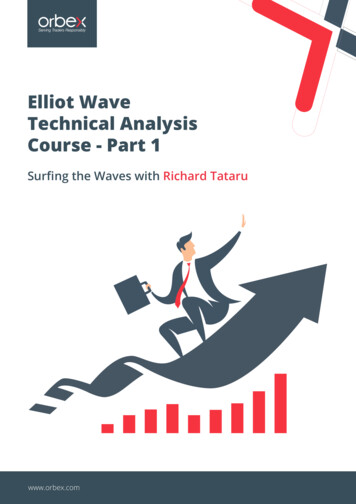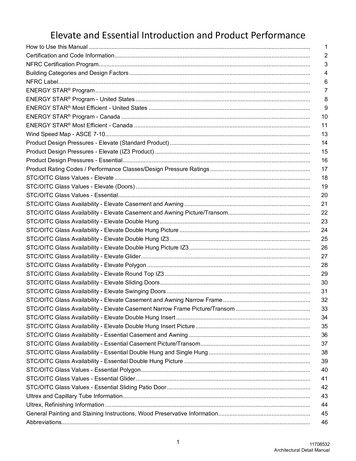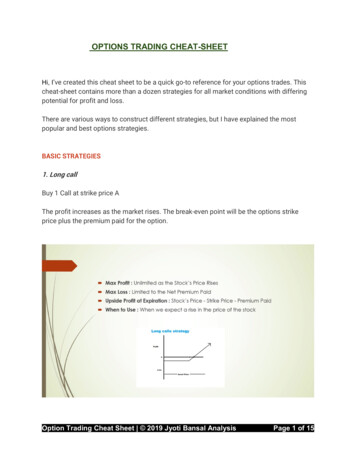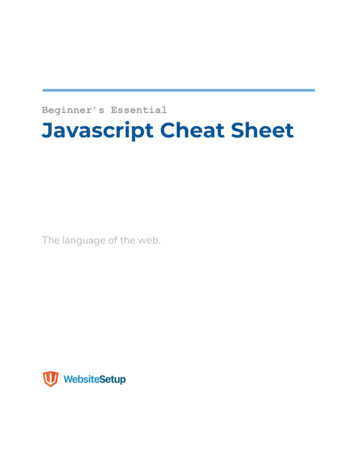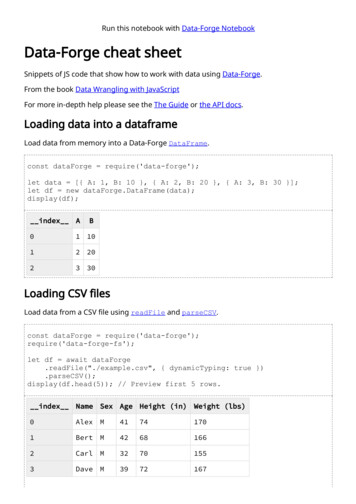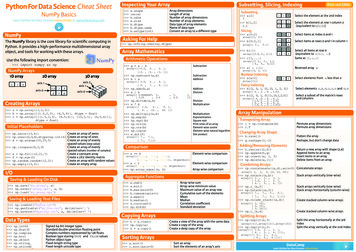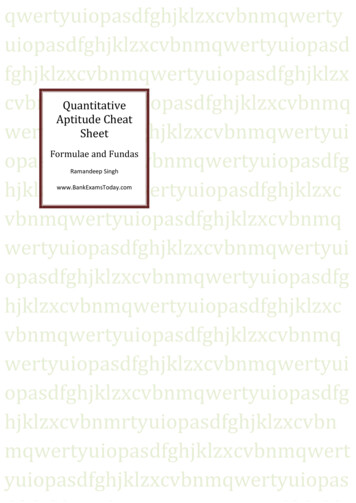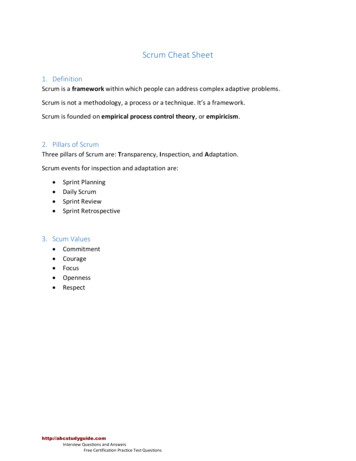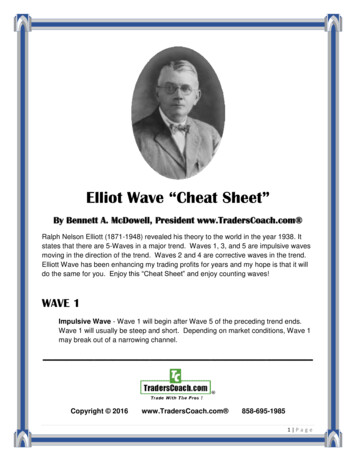
Transcription
Elliot Wave “Cheat Sheet”By Bennett A. McDowell, President www.TradersCoach.com Ralph Nelson Elliott (1871-1948) revealed his theory to the world in the year 1938. Itstates that there are 5-Waves in a major trend. Waves 1, 3, and 5 are impulsive wavesmoving in the direction of the trend. Waves 2 and 4 are corrective waves in the trend.Elliott Wave has been enhancing my trading profits for years and my hope is that it willdo the same for you. Enjoy this “Cheat Sheet” and enjoy counting waves!WAVE 1Impulsive Wave - Wave 1 will begin after Wave 5 of the preceding trend ends.Wave 1 will usually be steep and short. Depending on market conditions, Wave 1may break out of a narrowing channel.Copyright 2016www.TradersCoach.com 858-695-19851 P a g e
WAVE 2Corrective Wave – Wave 2 can be either simple or complex. It corrects Wave 1but can never extend beyond the starting point of Wave 1. Volume should belower during Wave 2 than during Wave 1.WAVE 3Impulsive Wave – Wave 3 is the steepest and strongest of all five waves. It hasthe highest volume. While it can, it is not always the longest wave in terms oftime. You must wait for Wave 3 to exceed the final price level of Wave 1. That’syour signal that Wave 2 is over. Any price bar going beyond the final price level ofWave 1 must be Wave 3. Wave 3 is the largest, most powerful wave in a trend.WAVE 4Corrective Wave – Wave 4 can be either simple or complex. If Wave 2 wassimple, then Wave 4 will be complex, and vice versa. Prices may create a simplea-b-c zigzag corrective pattern, which can easily be seen. This is the mostcommon. Or, instead prices may meander sideways for an extended period,forming a complex correction.WAVE 5Impulsive Wave – Wave 5 moves in the direction of the overall trend but isusually sluggish and not nearly as dynamic as the third wave of an Elliott Wavecycle. Wave 5 marks the last burst of buying (in a bull trend) or selling (in a beartrend) before a new trend starts.Copyright 2016www.TradersCoach.com 858-695-19852 P a g e
Bullish 5-Wave pattern with a-b-c patterns in Wave 2 and Wave 4.Copyright 2016www.TradersCoach.com 858-695-19853 P a g e
Bearish 5-Wave pattern with a-b-c patterns in Wave 2 and Wave 4.Copyright 2016www.TradersCoach.com 858-695-19854 P a g e
FIBONACCI TARGET ZONES% PROBABILITY(APPROXIMATE)WAVE 2Price RetracementWAVE 3Price ExtensionWAVE 4Price RetracementWAVE 5Price Extension23.6% - 38.2% of Wave 1 length38.2% - 61.8% of Wave 1 length61.8% - 100% of Wave 1 length100% - 161.8% of Wave 1 length161.8% - 175% of Wave 1 length175% - 261.8% of Wave 1 lengthGreater than 261.8% of Wave 1 length23.6% - 38.2% of Wave 3 length38.2% - 61.8% of Wave 3 length61.8% - 76.40% of Wave 3 length38.2% - 61.8% (see anchor guidelines)61.8% - 100% (see anchor guidelines)100% - 161.8% (see anchor NOTE: Most charting platforms have “Fibonacci” drawing software tools that when properly used willshow these target zones on your charts. It is important you understand where to place the multipleanchoring points when using the Fibonacci software drawing tools. (See table on following page.)Copyright 2016www.TradersCoach.com 858-695-19855 P a g e
GUIDELINES FOR ANCHORS WHEN USINGFIBONACCI DRAWING TOOLSWAVE 2Price RetracementWAVE 3Price ExtensionWAVE 4Price RetracementWAVE 5Price ExtensionAnchor the drawing tool at the beginning of Wave 1 and at theend of Wave1.Anchor the drawing tool at the beginning Wave 1 and the end ofWave 1. (To use three anchors, anchor the drawing tool at theend of Sub-Wave 2, the end of Sub-Wave 3 and the end of SubWave 4.)Anchor the drawing tool at the end of Wave 2 and at the end ofWave 3.Anchor the drawing tool at the end of Wave 2, the end of Wave 3and the end of Wave 4.Copyright 2016www.TradersCoach.com 858-695-19856 P a g e
Wave 1 must be Wave 3. Wave 3 is the largest, most powerful wave in a trend. WAVE 4 Corrective Wave – Wave 4 can be either simple or complex. If Wave 2 was simple, then Wave 4 will be complex, and vice versa. Prices may create a simple a-b-c zigzag corrective pattern, which can easily be seen. This is the most common. Or, instead prices may .
